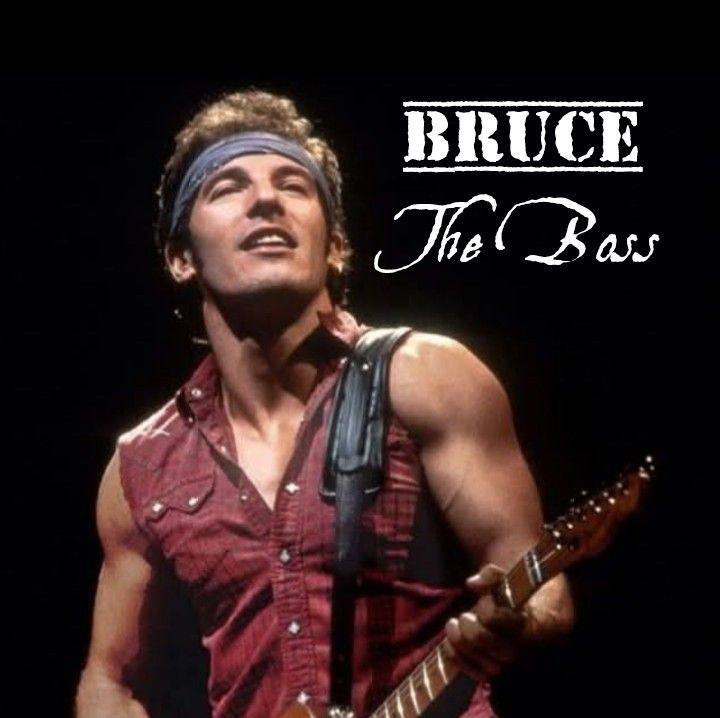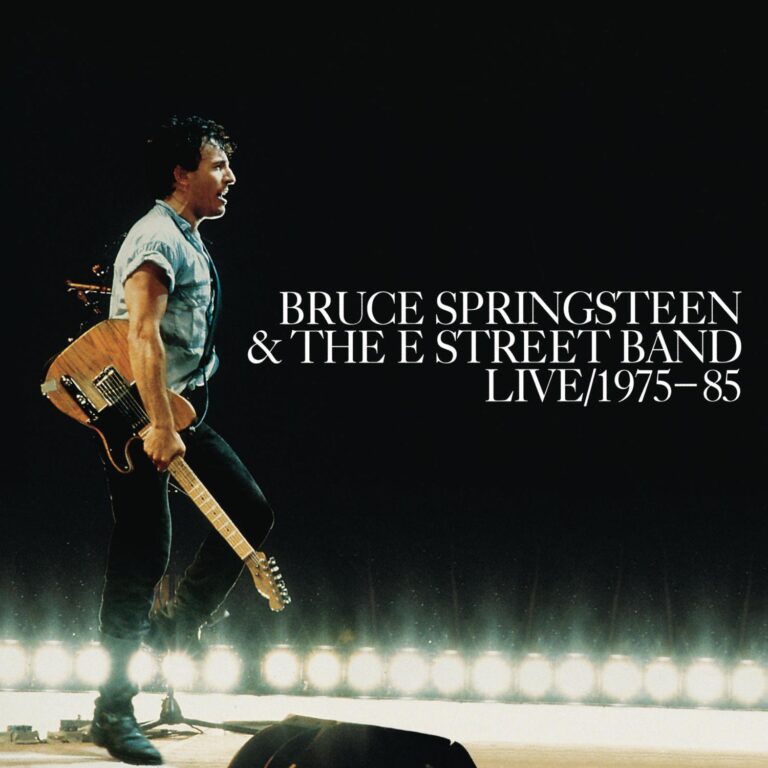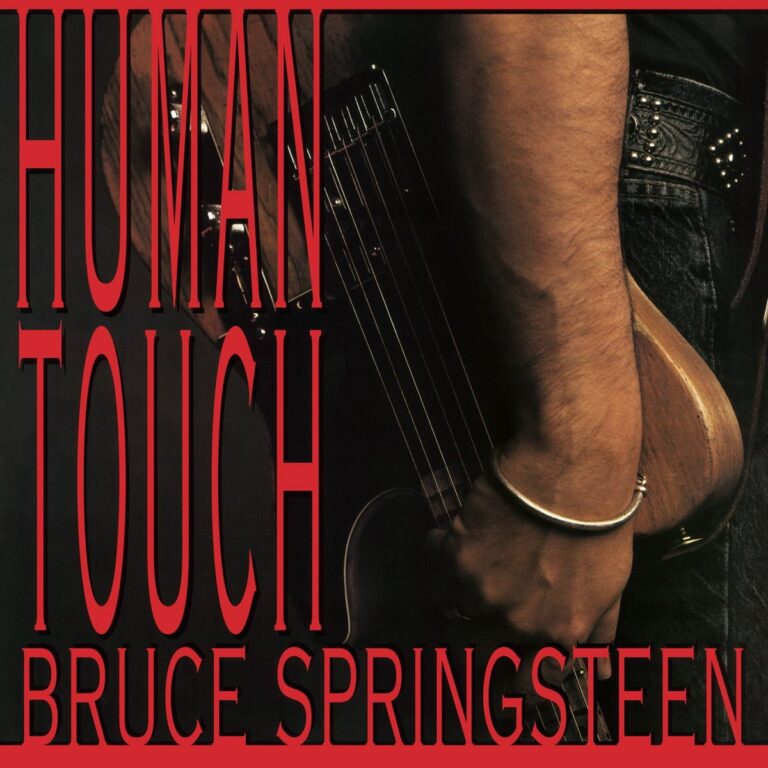Bruce Springsteen (1981–1990)
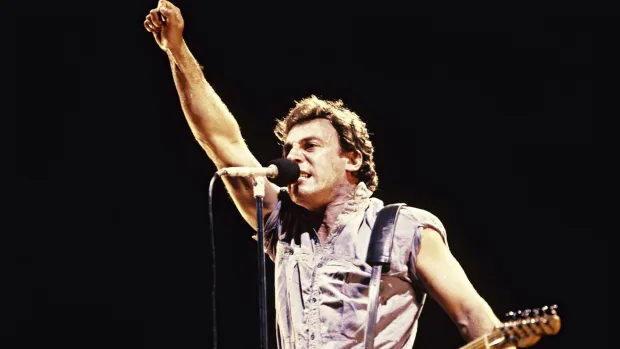
The Aftermath of The River (1981)
Following the success of the double album The River (1980), Bruce Springsteen embarked on an extensive world tour. In 1981, he brought his powerful live show to Europe for the first time, with dates in the UK, Germany, France, Spain, Italy, and other countries. This tour marked his first direct contact with a European audience that until then knew him more by reputation than by experience. It was a transitional year in which Springsteen, already a national star in the U.S., began to envision a more universal projection, both musically and ideologically. During his European concerts, Bruce began to speak more openly about political topics, such as war and social inequality, laying the groundwork for a socially conscious artist.
Nebraska (1982): Rawness and Narrative
In contrast to the rock sound of his previous work, Nebraska was released on September 30, 1982 as an acoustic album, recorded at his home in New Jersey. It was an introspective and somber experiment, with tales of killers, outlaws, and lost souls in a minimalist musical landscape. Partly inspired by murderer Charles Starkweather, Bruce crafted a collection of songs that rejected rock’s glamour and embraced tragic American folklore. Nebraska proved he didn’t need big productions or the E Street Band to move people. It was a bare, honest, and deeply human work that defied the mainstream during the MTV era, becoming an act of artistic bravery.
Notable Tracks:
- Atlantic City
- State Trooper
- Highway Patrolman
- Reason to Believe
Reception:
Although modest commercially (reaching #3 on Billboard 200), it was critically acclaimed and is considered one of his most profound and literary works. It inspired folk, alt-country, and indie rock artists.
Born in the U.S.A. (1984): Global Stardom
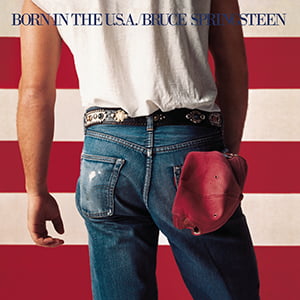
Released on June 4, 1984, this album catapulted Springsteen to global superstardom. With a bright production, prominent synthesizers and guitars, the album explored working-class disillusionment under an optimistic sonic veneer. It was a cultural phenomenon: over 30 million copies sold worldwide, seven Top 10 singles, and an epic tour that crowned him as a decade-defining icon. The title track was mistakenly used as a patriotic anthem, ignoring its critical message about the treatment of veterans. Springsteen managed to balance commercial success with lyrical depth like few others.
Major Hits:
- Born in the U.S.A.
- Dancing in the Dark
- Glory Days
- I’m on Fire
- My Hometown
- Cover Me
- I’m Goin’ Down
Awards:
- 1985: Grammy for Best Male Rock Vocal Performance for “Dancing in the Dark”
- MTV Video Music Awards: Best Male Performance
Born in the U.S.A. Tour (1984–1985)
- Duration: June 1984 to October 1985
- Over 150 concerts across North America, Europe, Japan, and Australia
- More than 5 million tickets sold
- One of the most profitable tours of the decade
The tour was impressive both in energy and length. Each show often exceeded three hours, with a setlist spanning his entire career. It was a massive celebration of music, but also a platform for social commentary in the Reagan era.
Activism and Social Causes
Springsteen became increasingly involved in charitable and political causes. In 1985, he participated in the recording of the charity single We Are the World and began donating to food banks. In 1986, he released a live version of “War,” Edwin Starr’s anti-war classic, as a protest against U.S. foreign policy. In 1988, he joined Amnesty International’s Conspiracy of Hope tour, performing across America and Europe alongside artists like Sting, Peter Gabriel, and Tracy Chapman. These acts marked the beginning of a new role in his career: the activist artist unafraid to speak out from the stage.
Live/1975–85 (1986): A Testament to a Live Legend
In November 1986, Bruce released a 5-LP (or 3-CD) box set of live recordings from his 1975 to 1985 tours. It became one of the best-selling live albums of all time, debuting at #1 on Billboard. More than just a compilation, it was a historical document of Springsteen’s live evolution, featuring extended versions, between-song storytelling, and a deep dive into his musical narrative.
Includes epic versions of:
- The River
- Thunder Road
- Born to Run
- No Surrender
- Because the Night
This release not only reinforced his legend as a performer but also served as a symbolic closing of a chapter before his next artistic transformation.
Tunnel of Love (1987): Vulnerability and Maturity
Released on October 6, 1987, this album marked a shift toward intimacy and emotion. Though it included some E Street Band members, it was mostly recorded solo by Springsteen. The introspective lyrics, filled with emotional insecurity, reflected his marital crisis with actress Julianne Phillips. Tunnel of Love explores the complexity of relationships and fear of romantic failure. Musically, it leaned on softer sounds, with fewer guitars and more synthesizers, creating a melancholic atmosphere.

Highlighted Tracks:
- Brilliant Disguise
- Tunnel of Love
- Tougher Than the Rest
- One Step Up
Awards:
- Grammy 1988: Nominated for Album of the Year
- MTV: Nominated for Best Male Video
Tunnel of Love Express Tour (1988)
- Start: February 1988
- End: August 1988
- Last tour with the E Street Band during the decade
- The setlist had a more theatrical and less epic approach than previous tours
The tour featured new stage designs and a more structured format than earlier tours. It was a symbolic farewell to the E Street Band, though not officially announced as such at the time.
Chimes of Freedom (EP, 1988)
This live EP was released in support of Amnesty International. It includes:
- Chimes of Freedom (Bob Dylan cover)
- Tougher Than the Rest
- Born to Run (acoustic version)
- Be True
It was part of the “Human Rights Now!” campaign, which featured a global tour with socially engaged artists. Bruce shared the stage with prominent musicians and activists, solidifying his image as a committed and compassionate artist.
Personal Changes and Transition (1989–1990)
In 1989, Springsteen announced the temporary dissolution of the E Street Band, a move that surprised many longtime fans. Around the same time, he divorced actress Julianne Phillips and began a relationship with Patti Scialfa, a band member since the mid-1980s. He also moved to California, seeking a more private life. During this period, he continued writing and recording, preparing the way for two studio albums released in 1992. The change was both personal and artistic: Bruce was entering a new, more introspective stage, less reliant on his image as a classic rock frontman.
Bruce Springsteen Discography (1981–1990)
| Year | Album | Type |
|---|---|---|
| 1982 | Nebraska | Studio |
| 1984 | Born in the U.S.A. | Studio |
| 1986 | Live/1975–85 | Live Album |
| 1987 | Tunnel of Love | Studio |
| 1988 | Chimes of Freedom | Live EP |
Major Awards (1981–1990)
- Grammy Awards:
- Dancing in the Dark (Best Male Rock Vocal, 1985)
- Multiple nominations for Tunnel of Love
- American Music Awards:
- Favorite Pop/Rock Male Artist (1985)
- MTV Video Music Awards:
- Best Male Video – “Dancing in the Dark”
- Multiple nominations for “Brilliant Disguise”
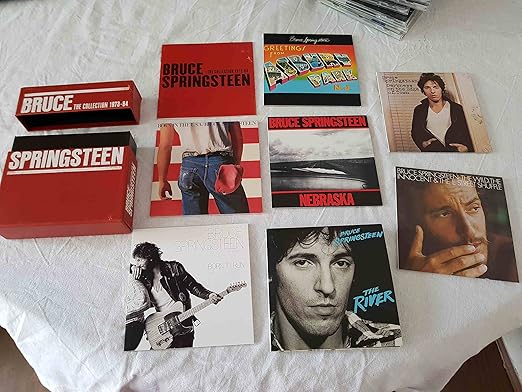
Pack/Box set
In the following link you have all the information about Bruce Springsteen’s Biography: https://brucetheboss.com/tag/biography/
